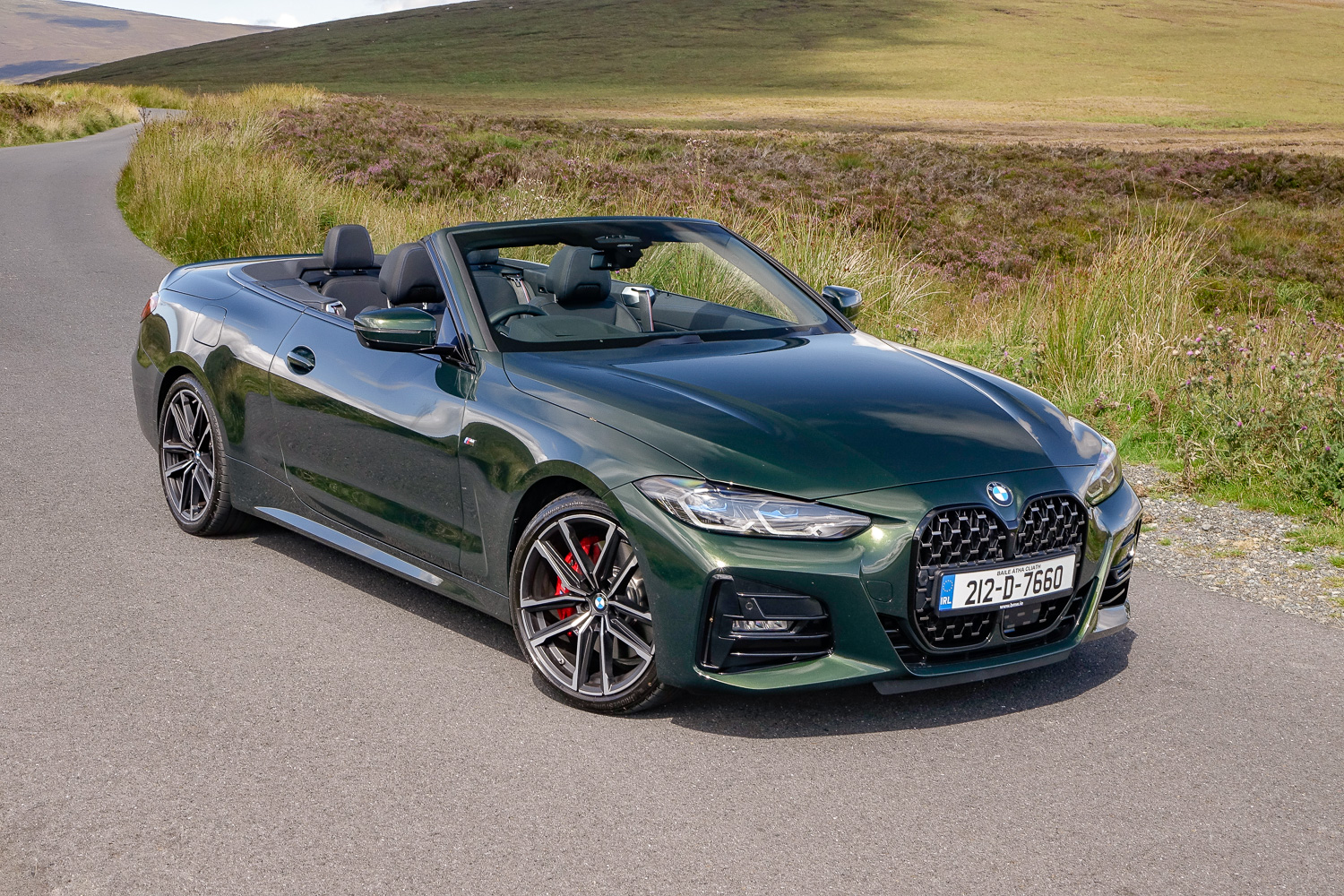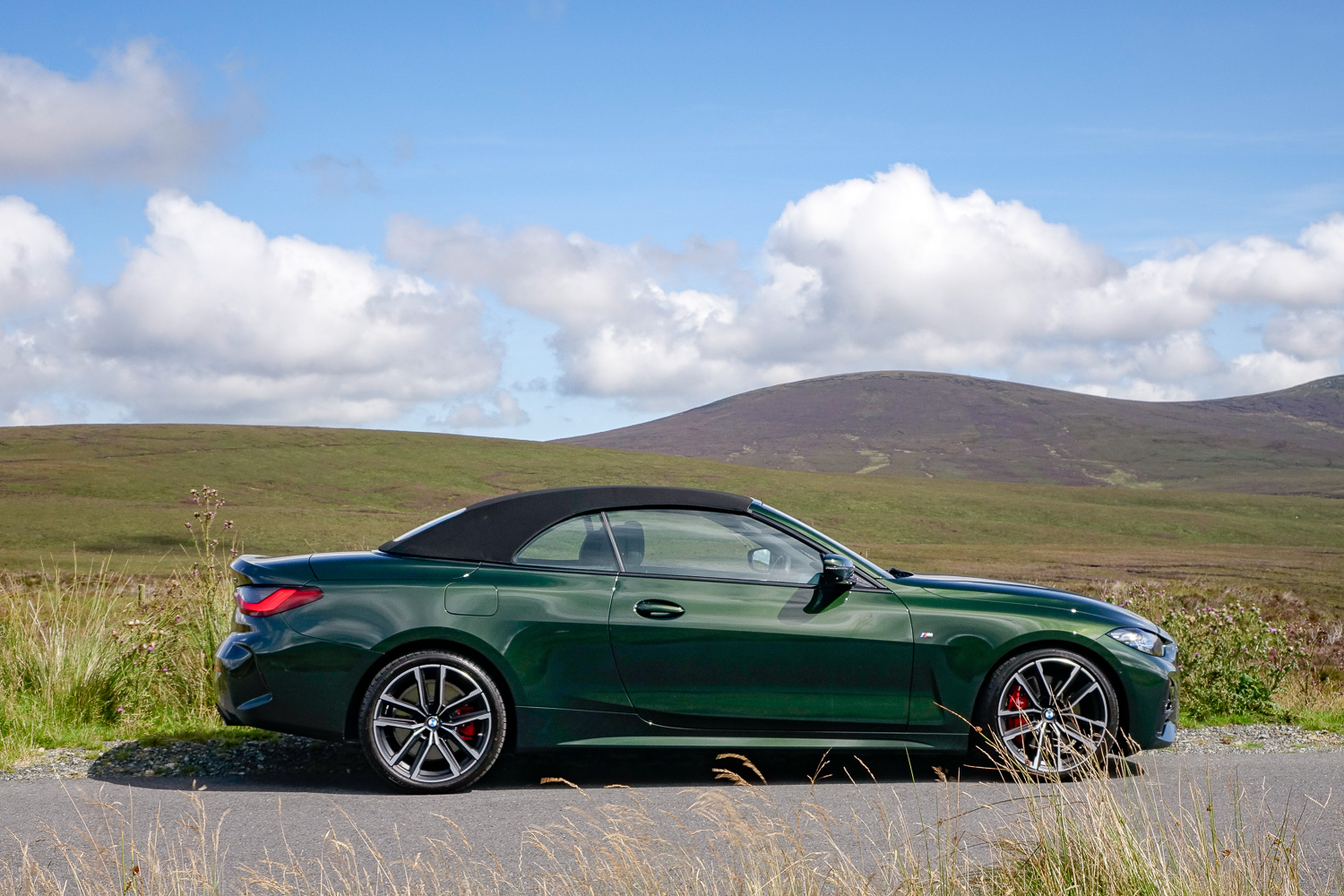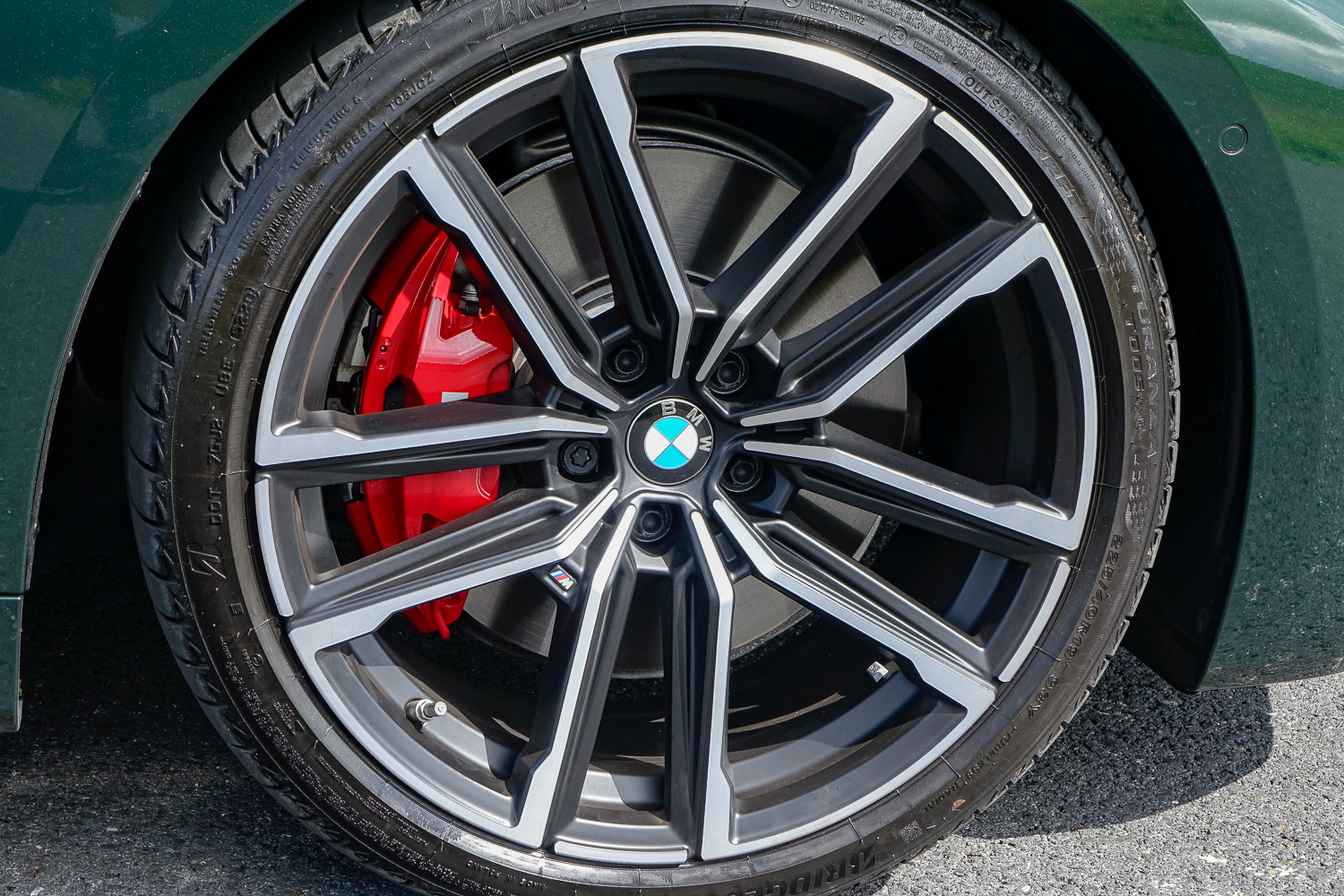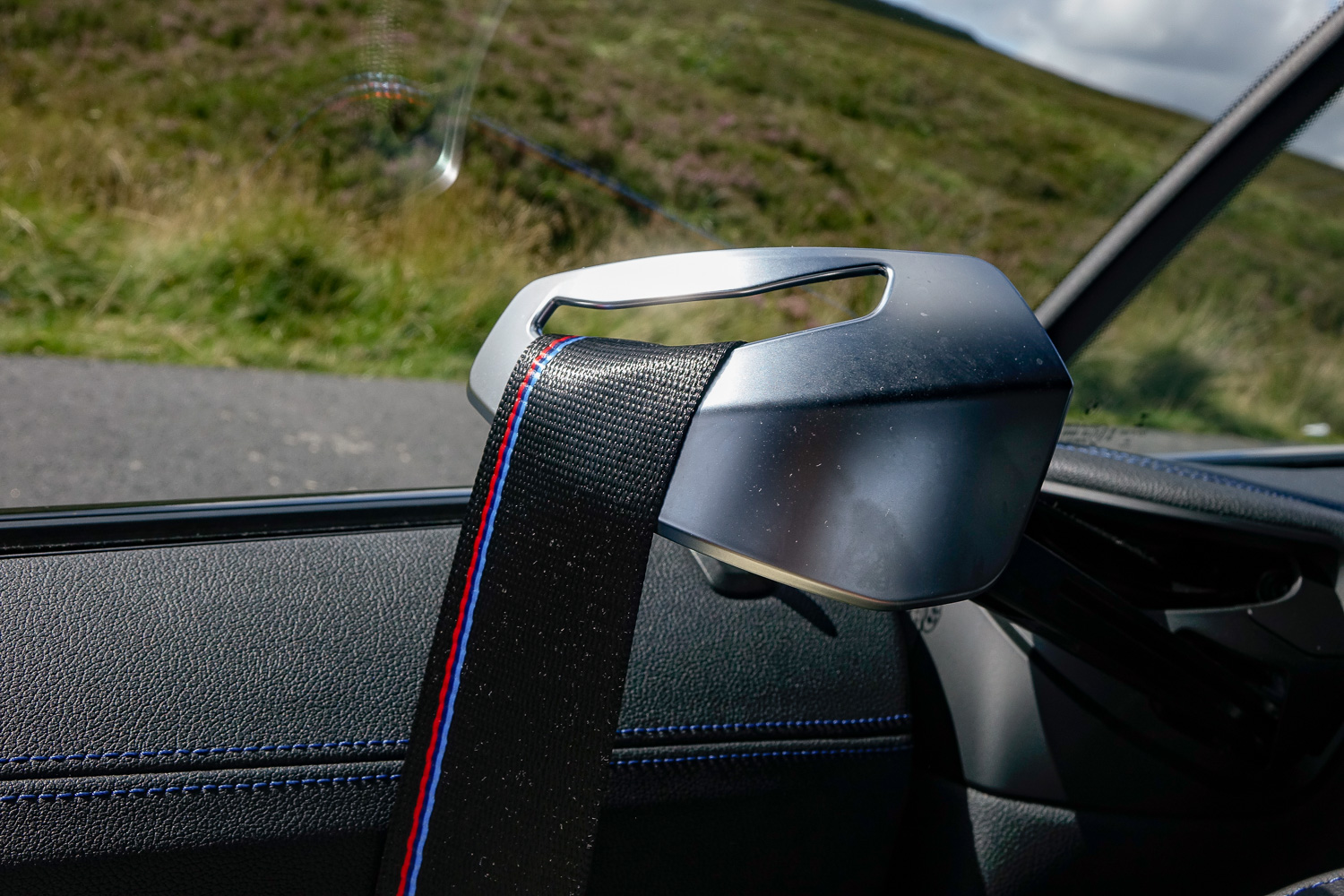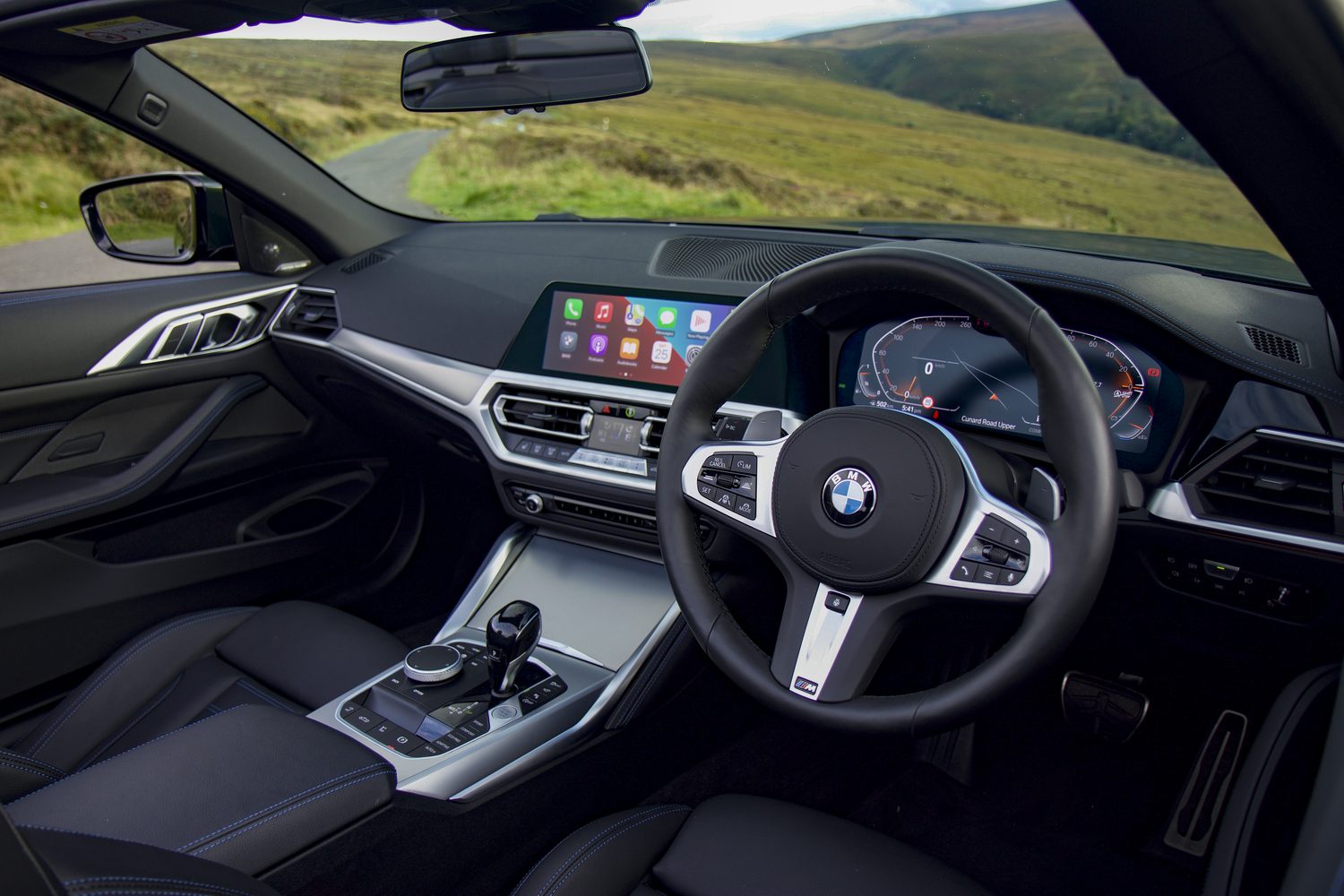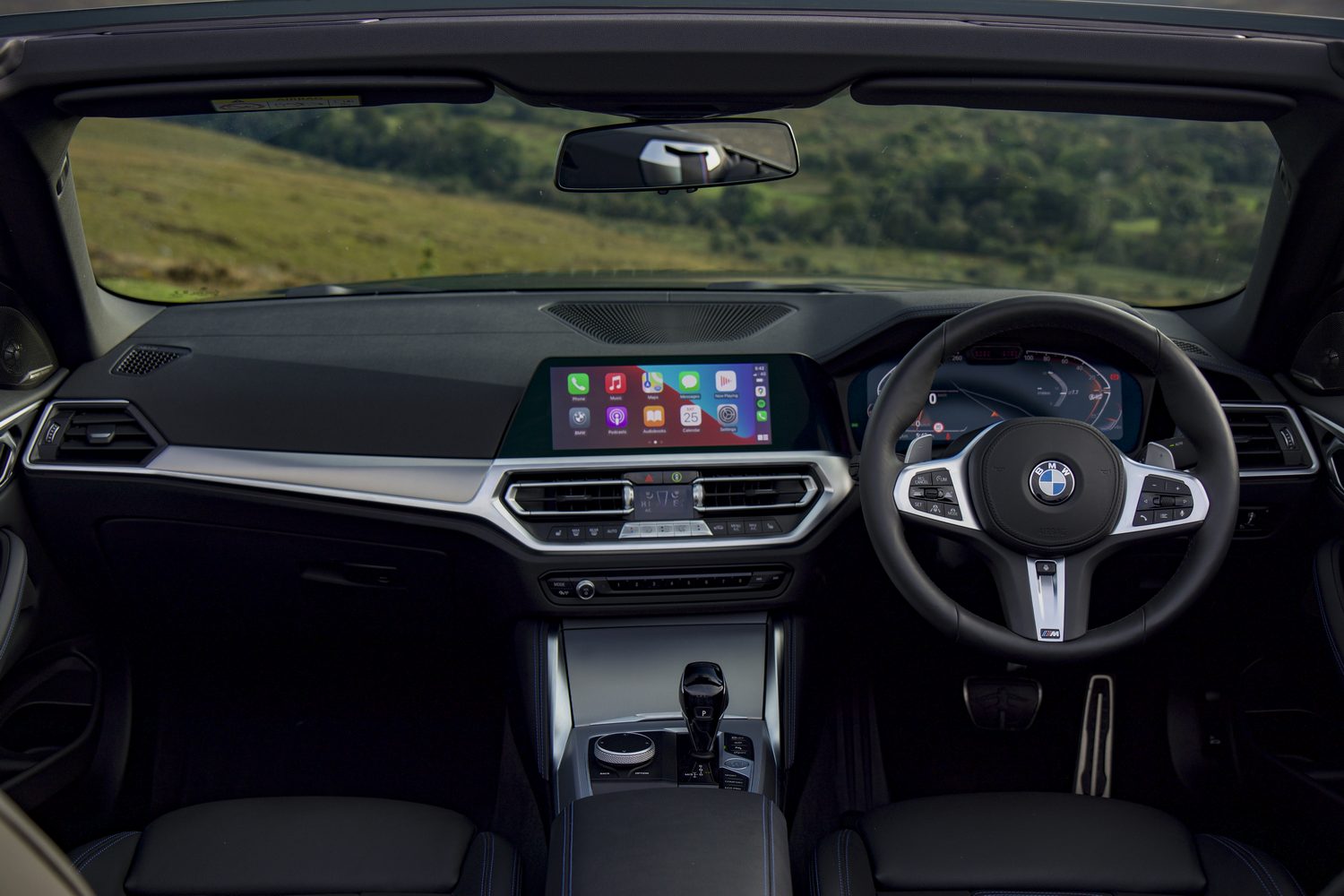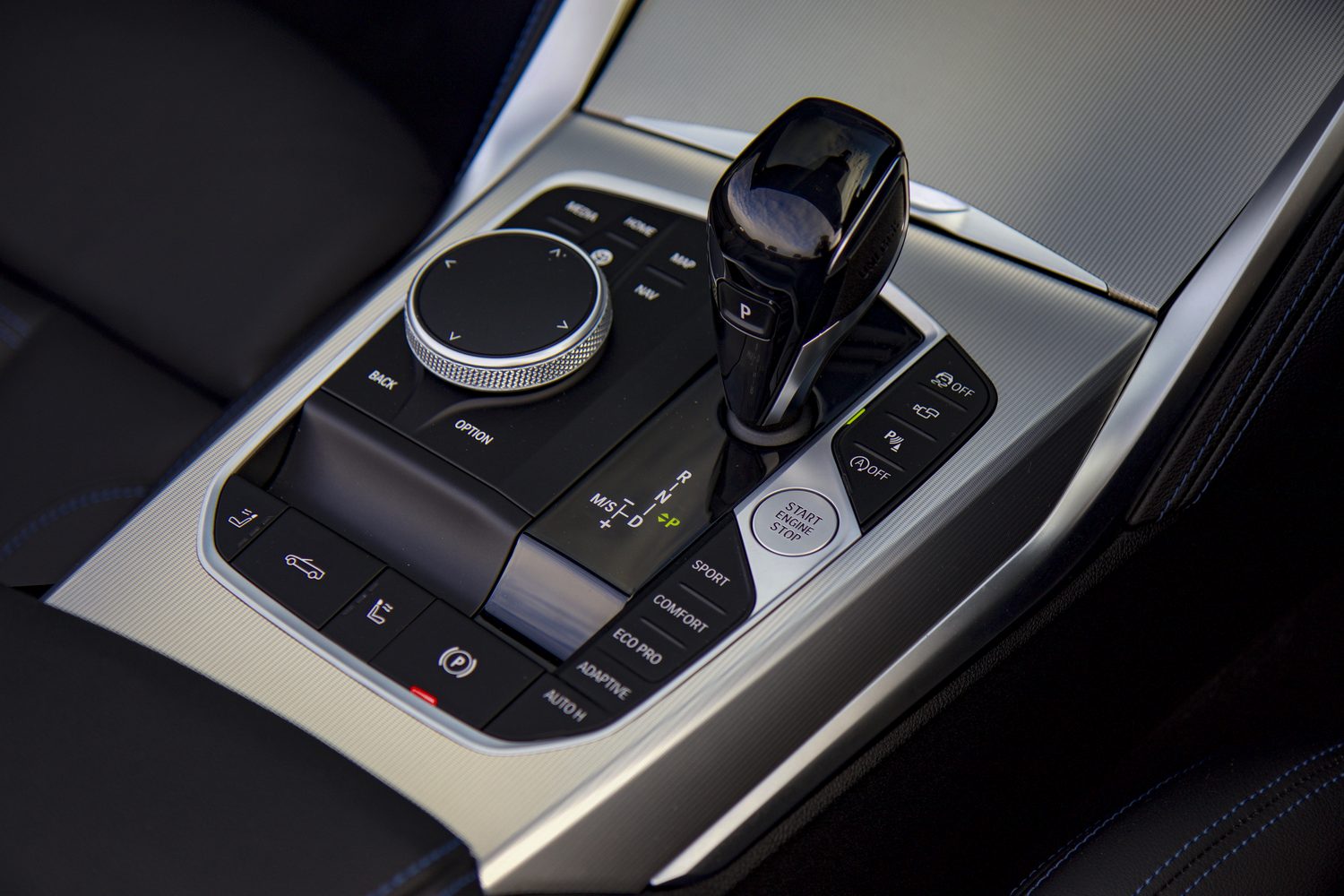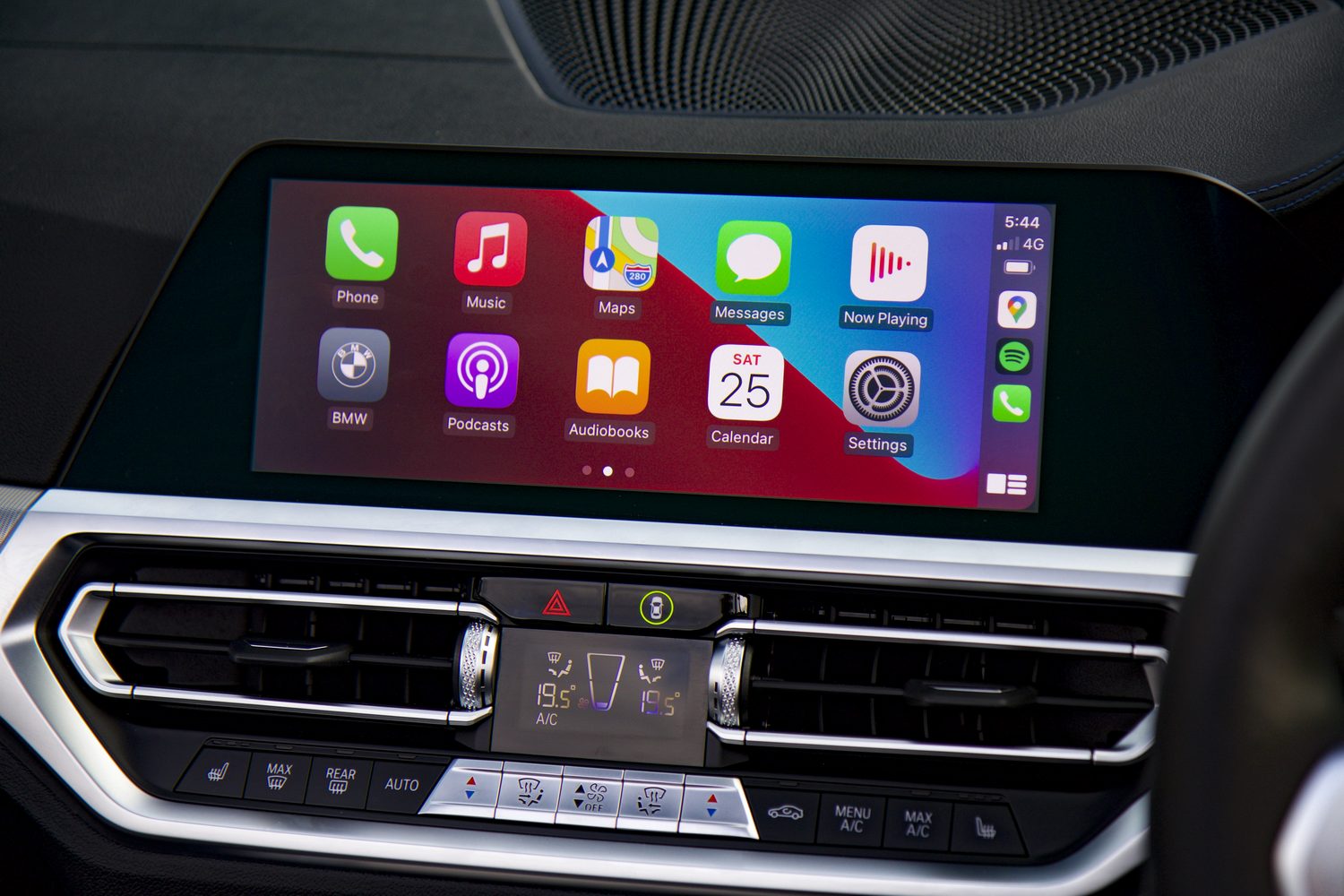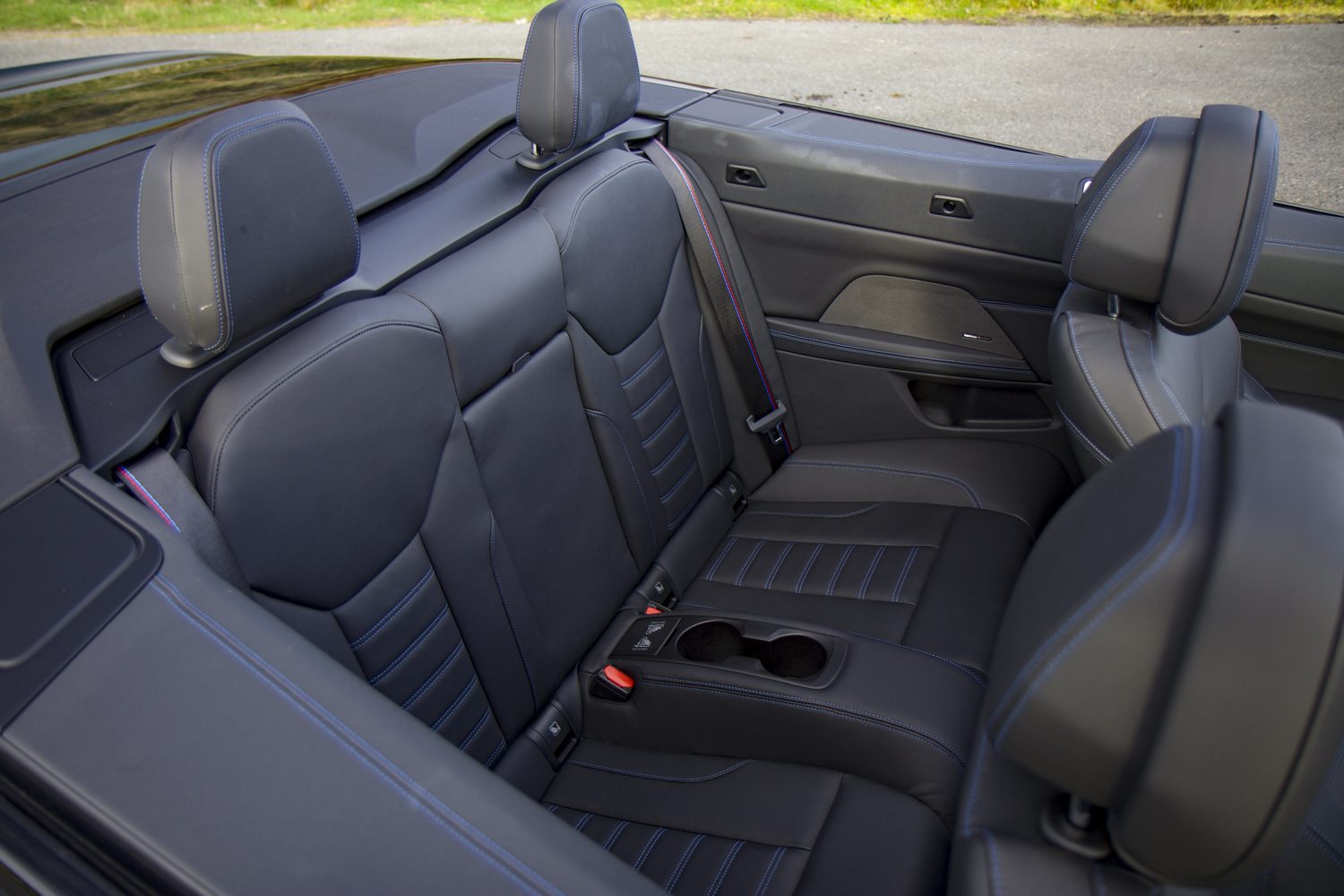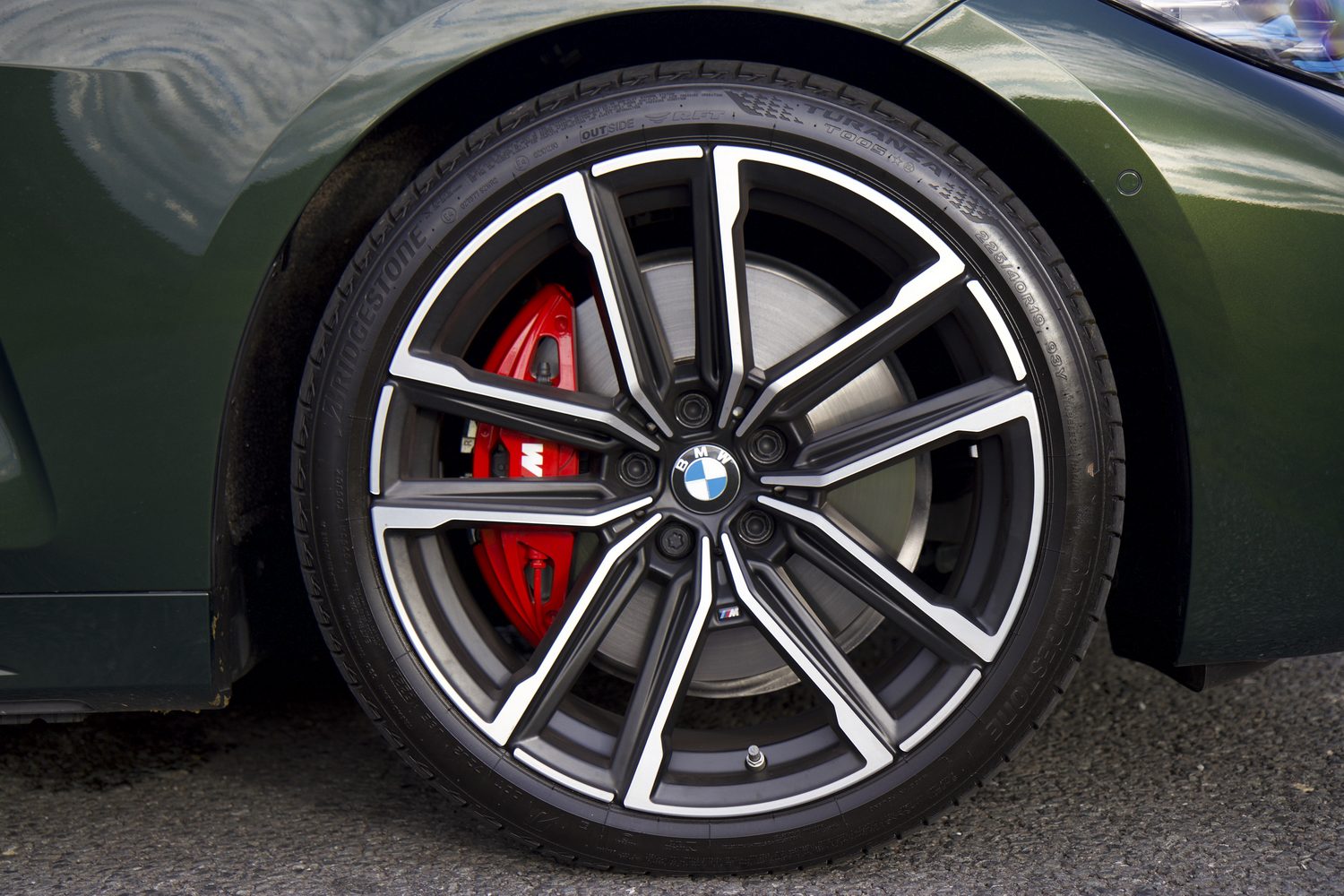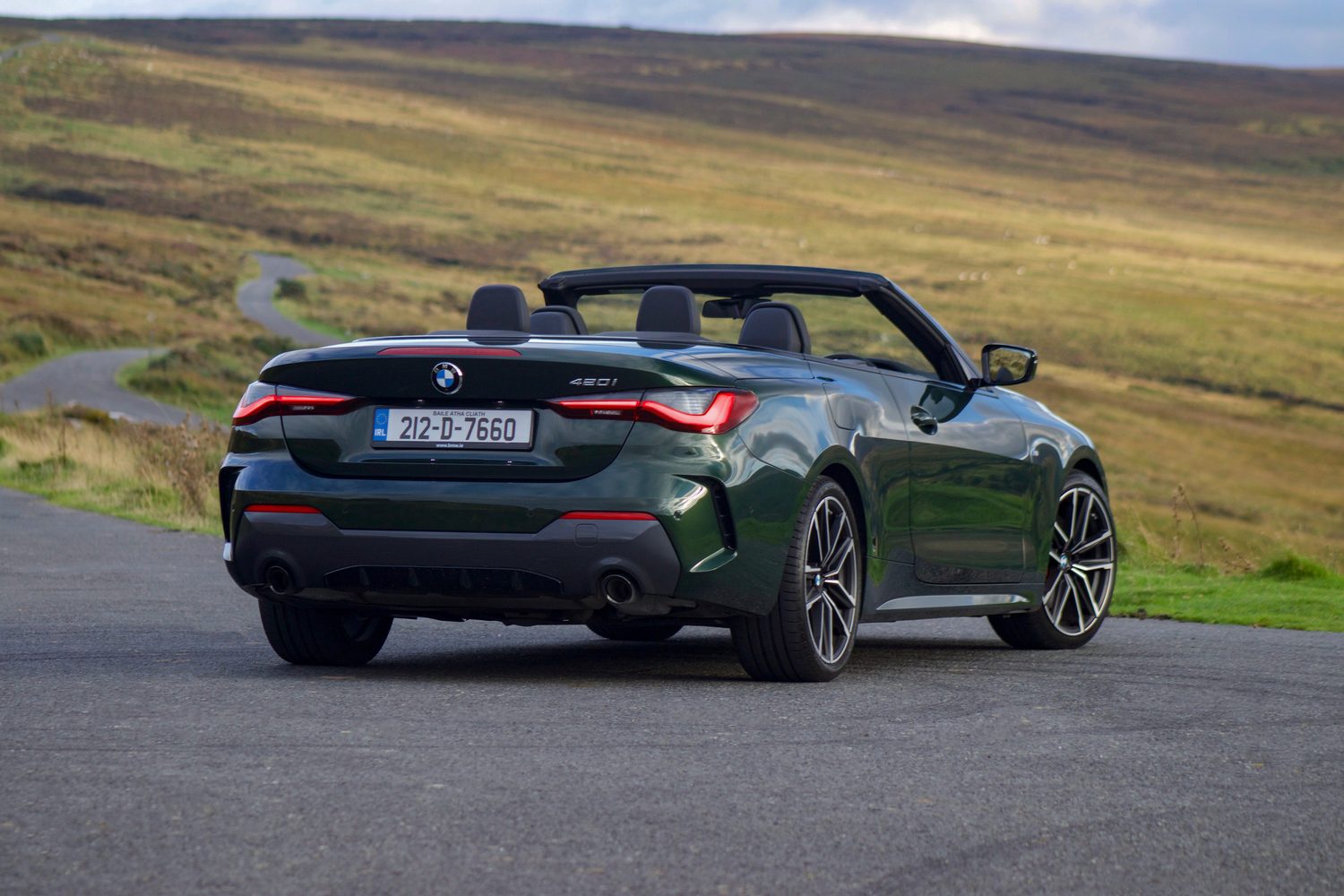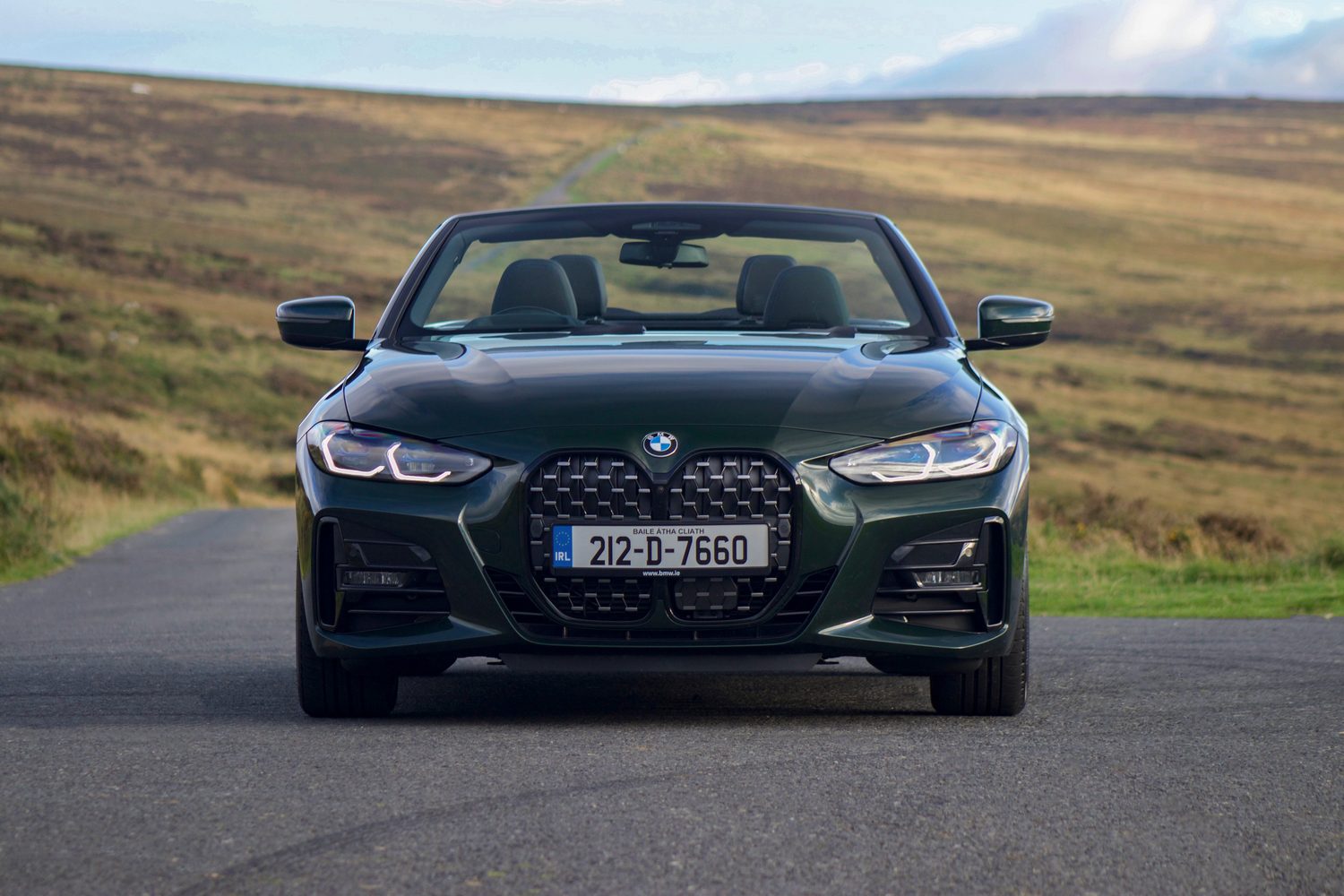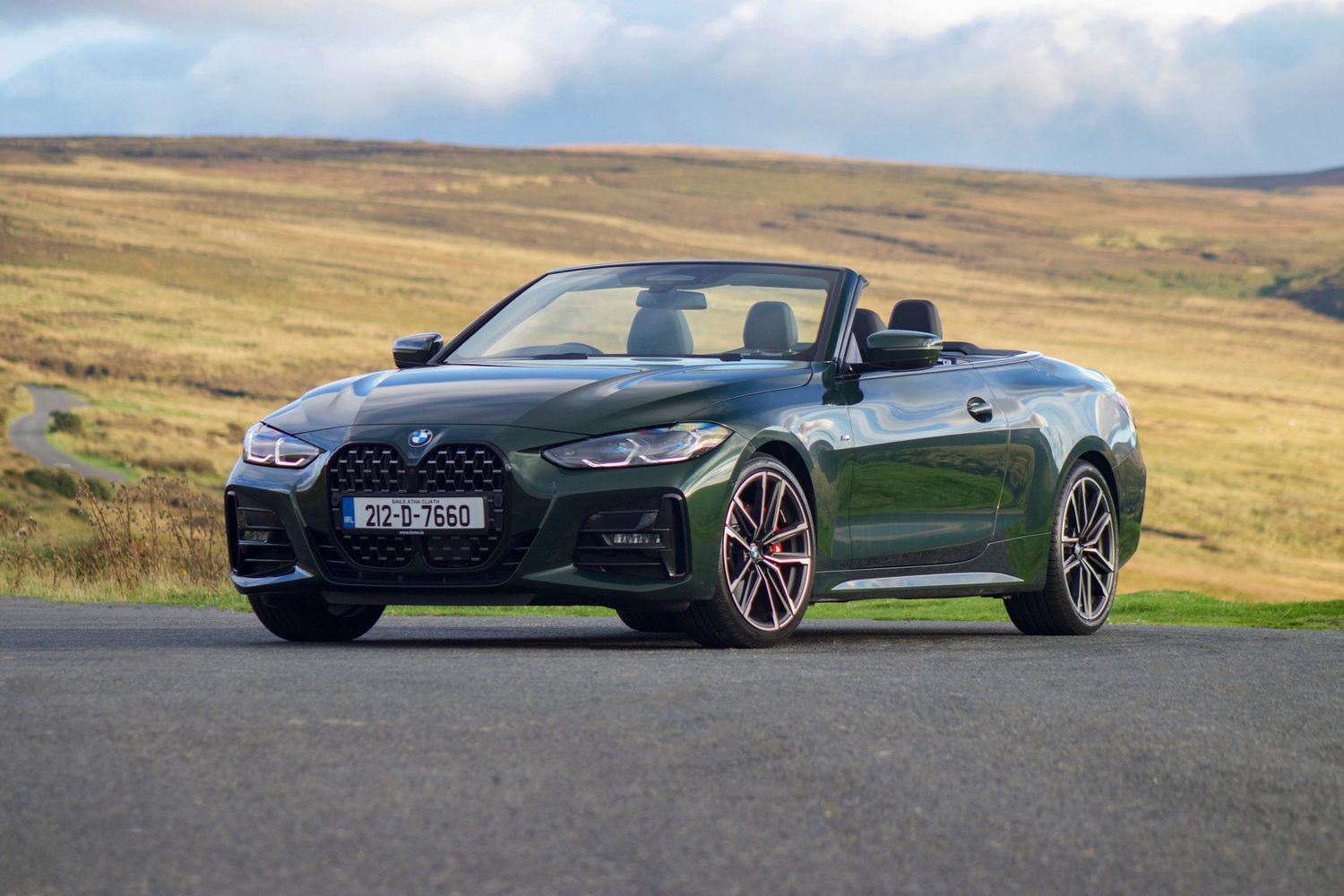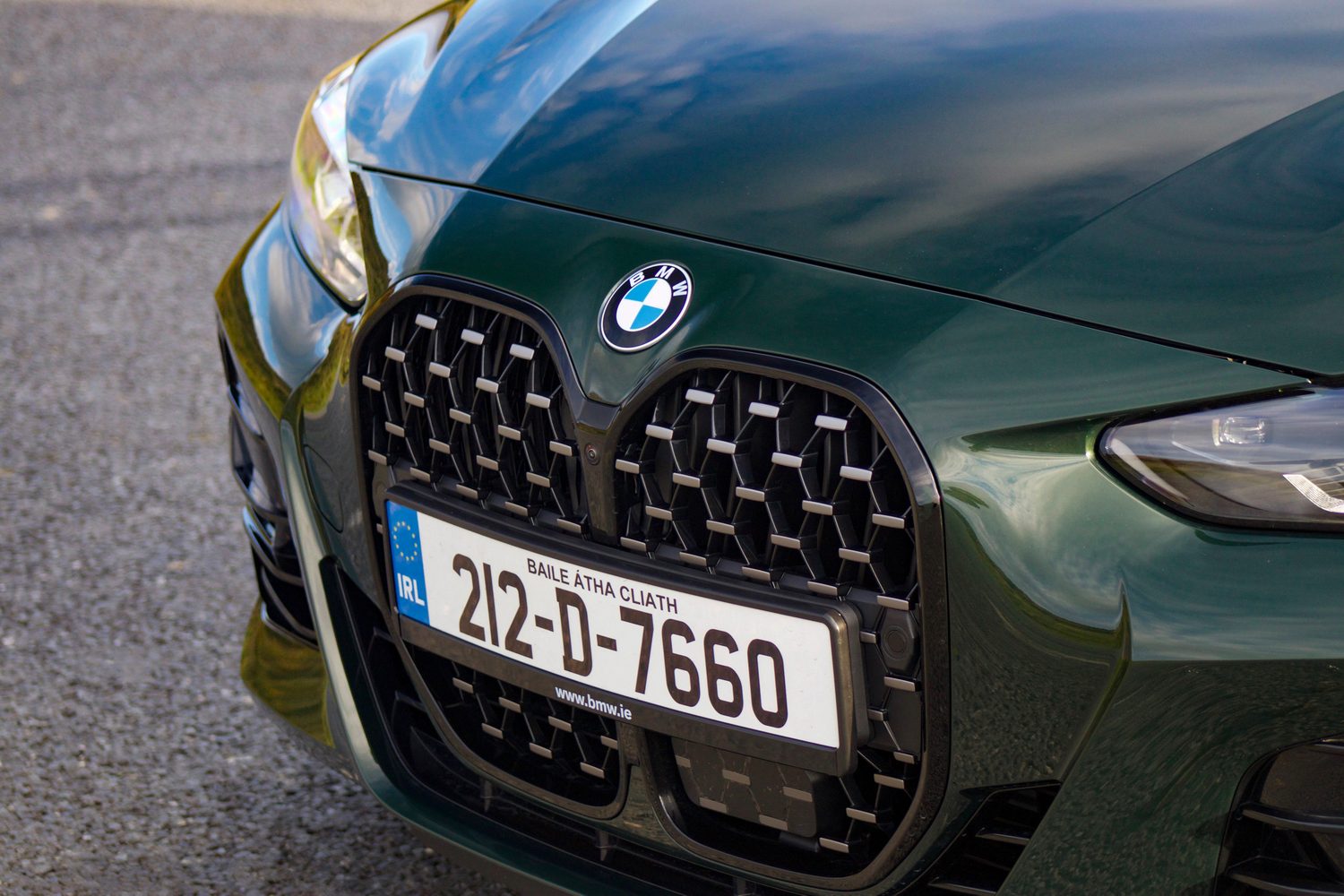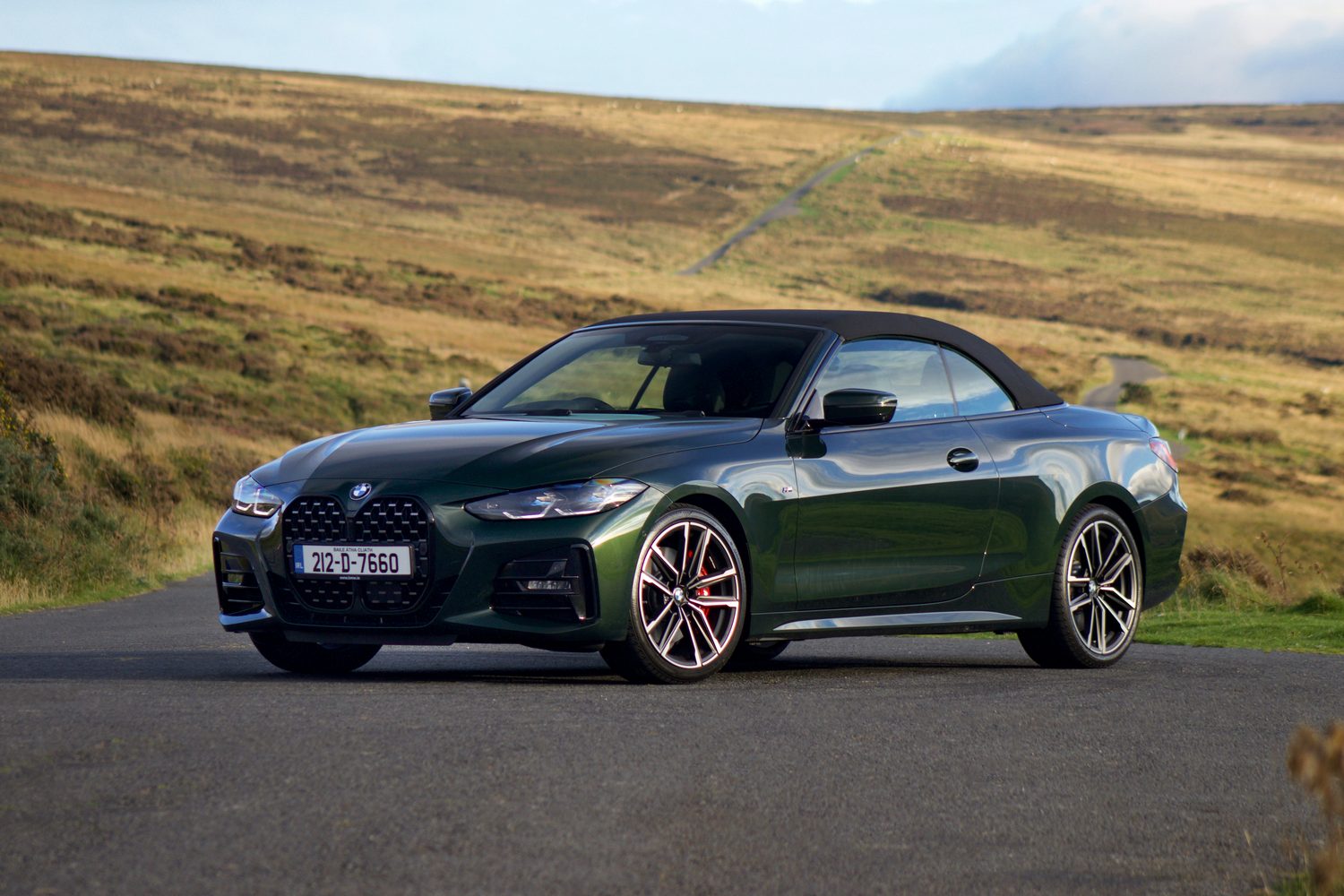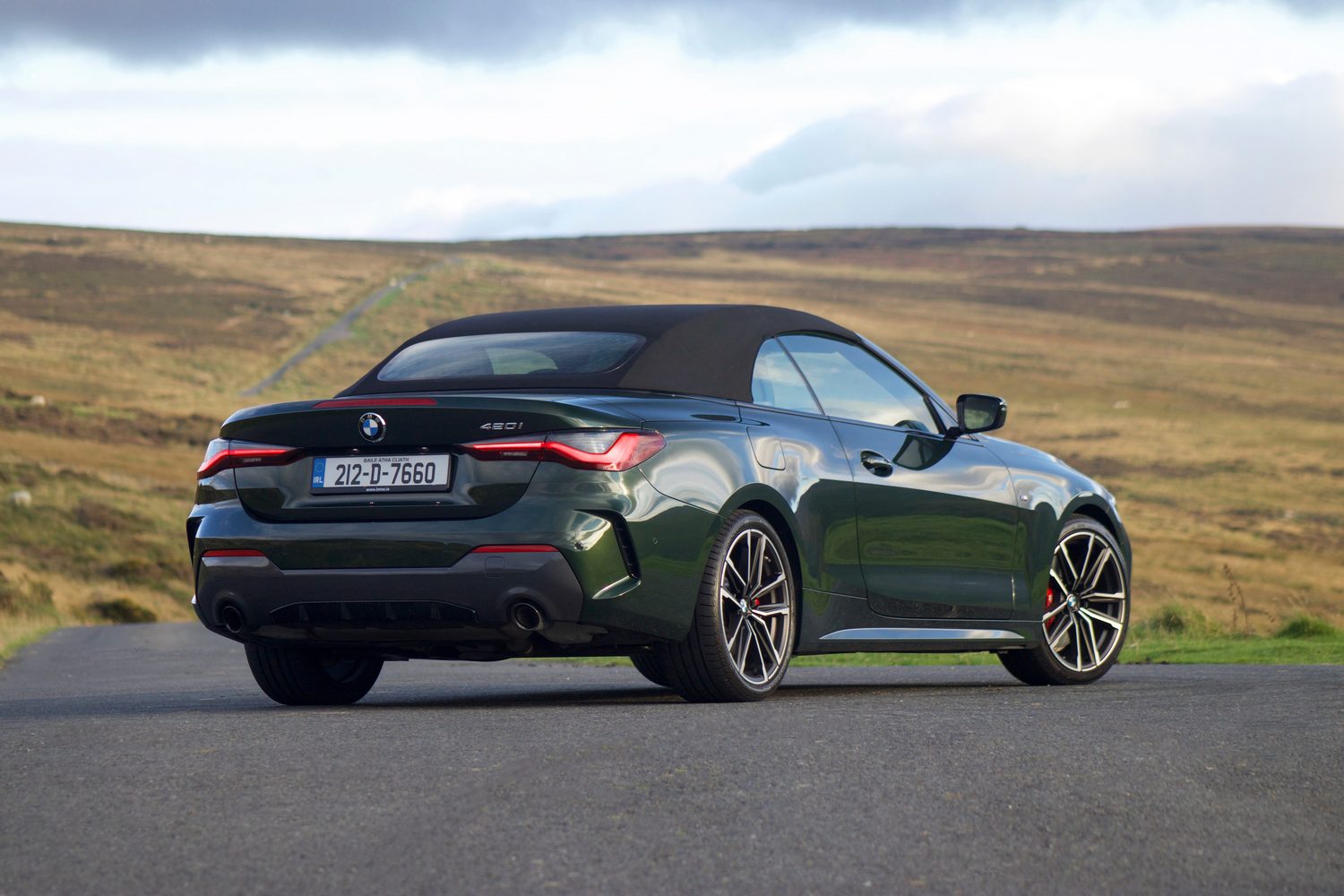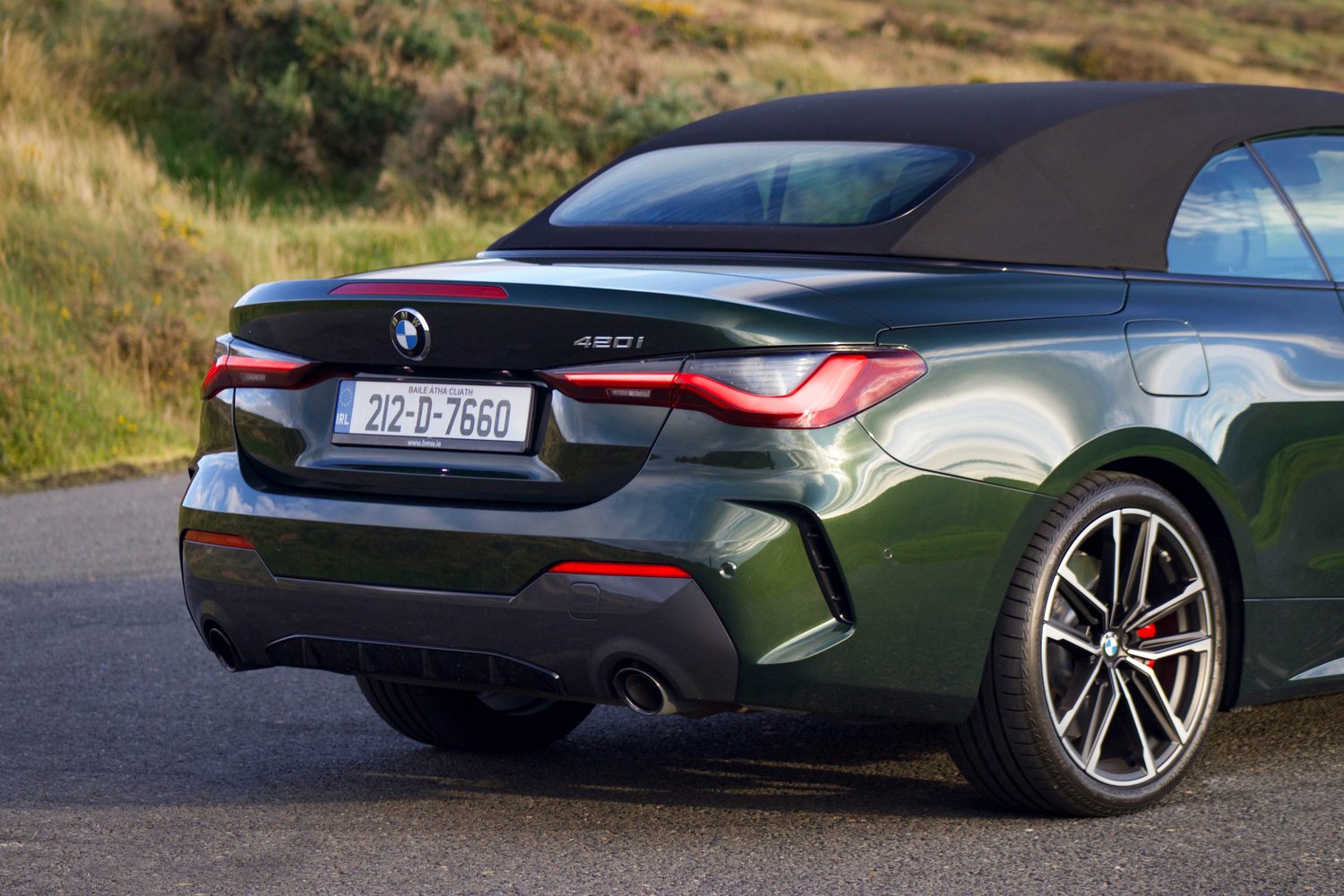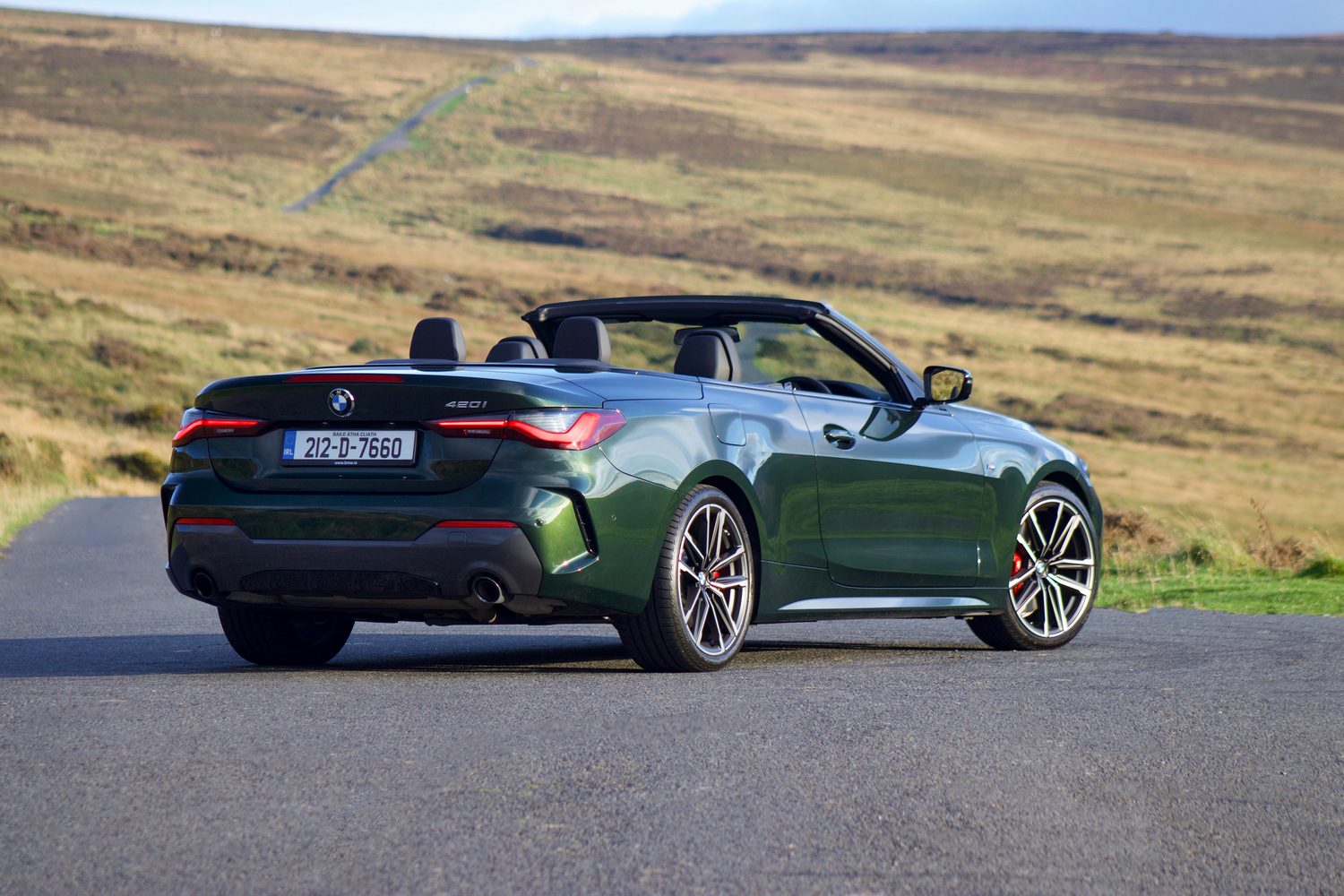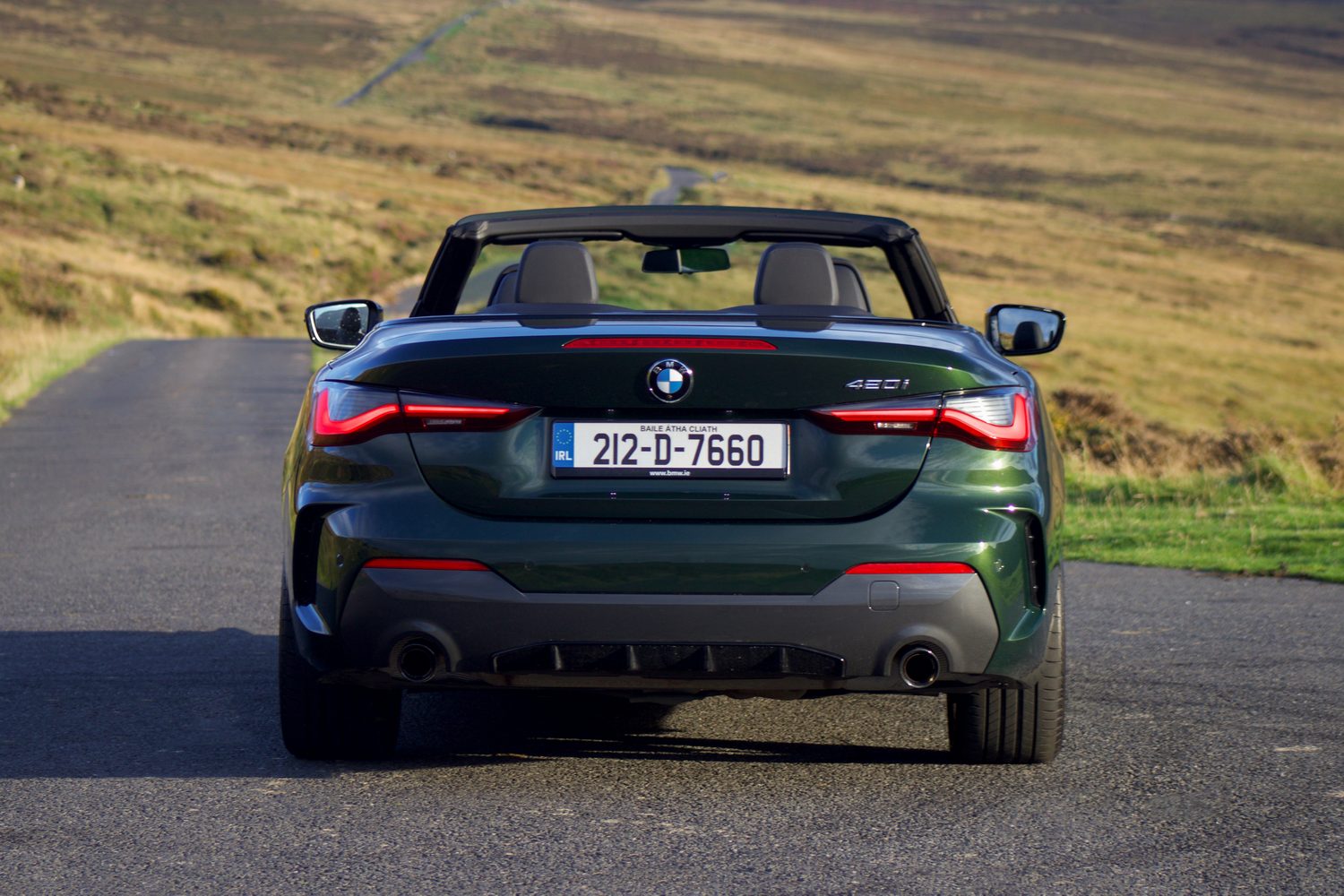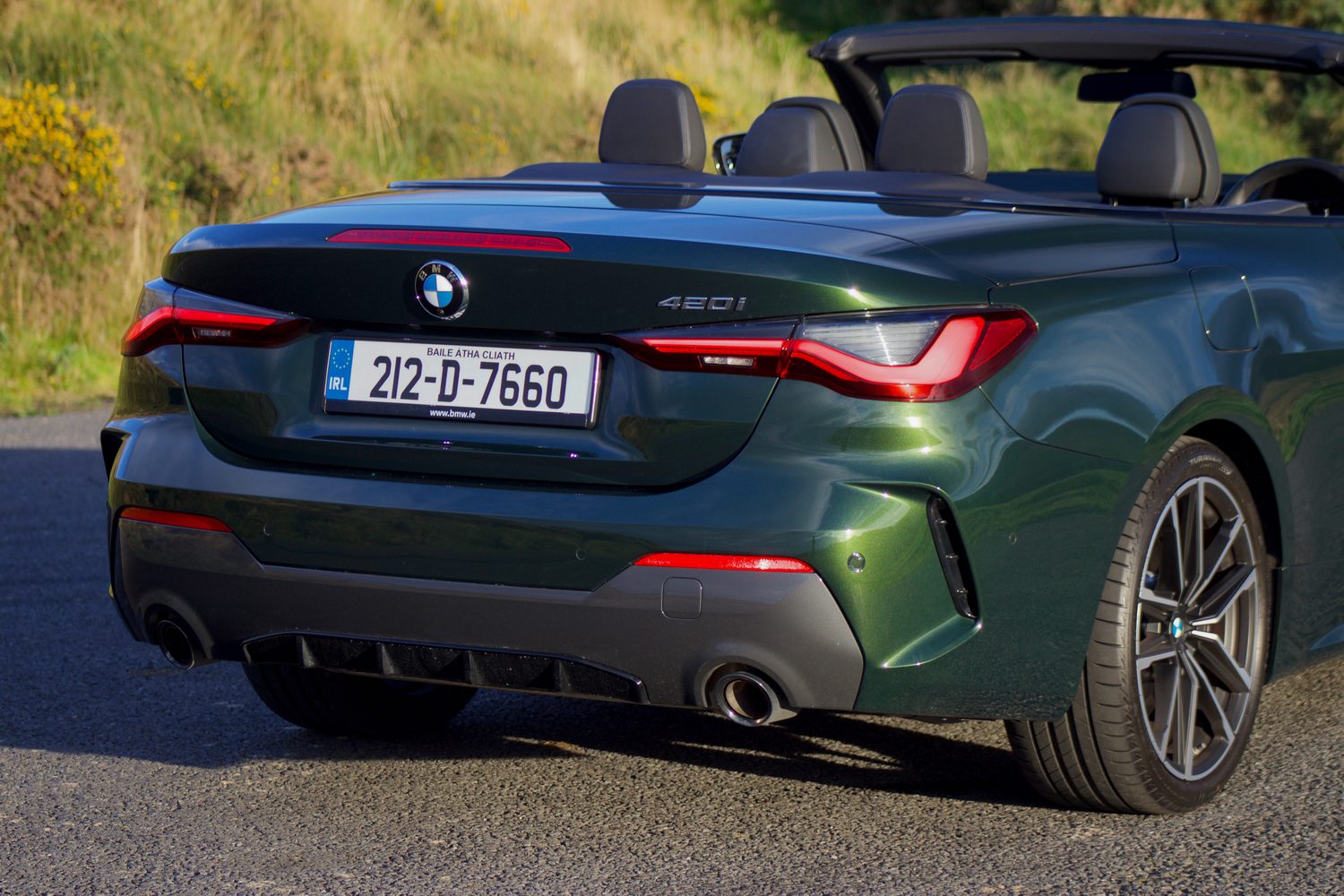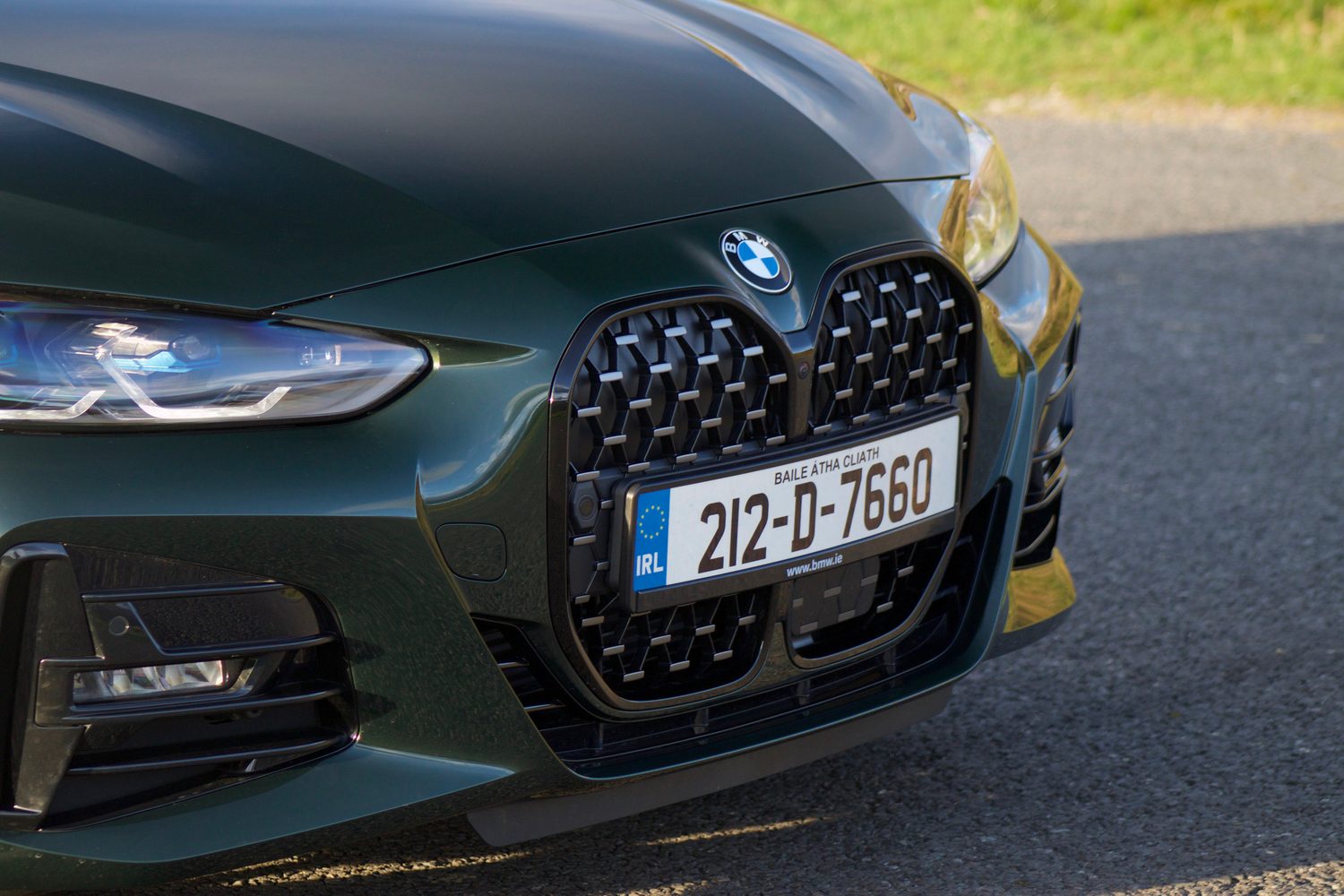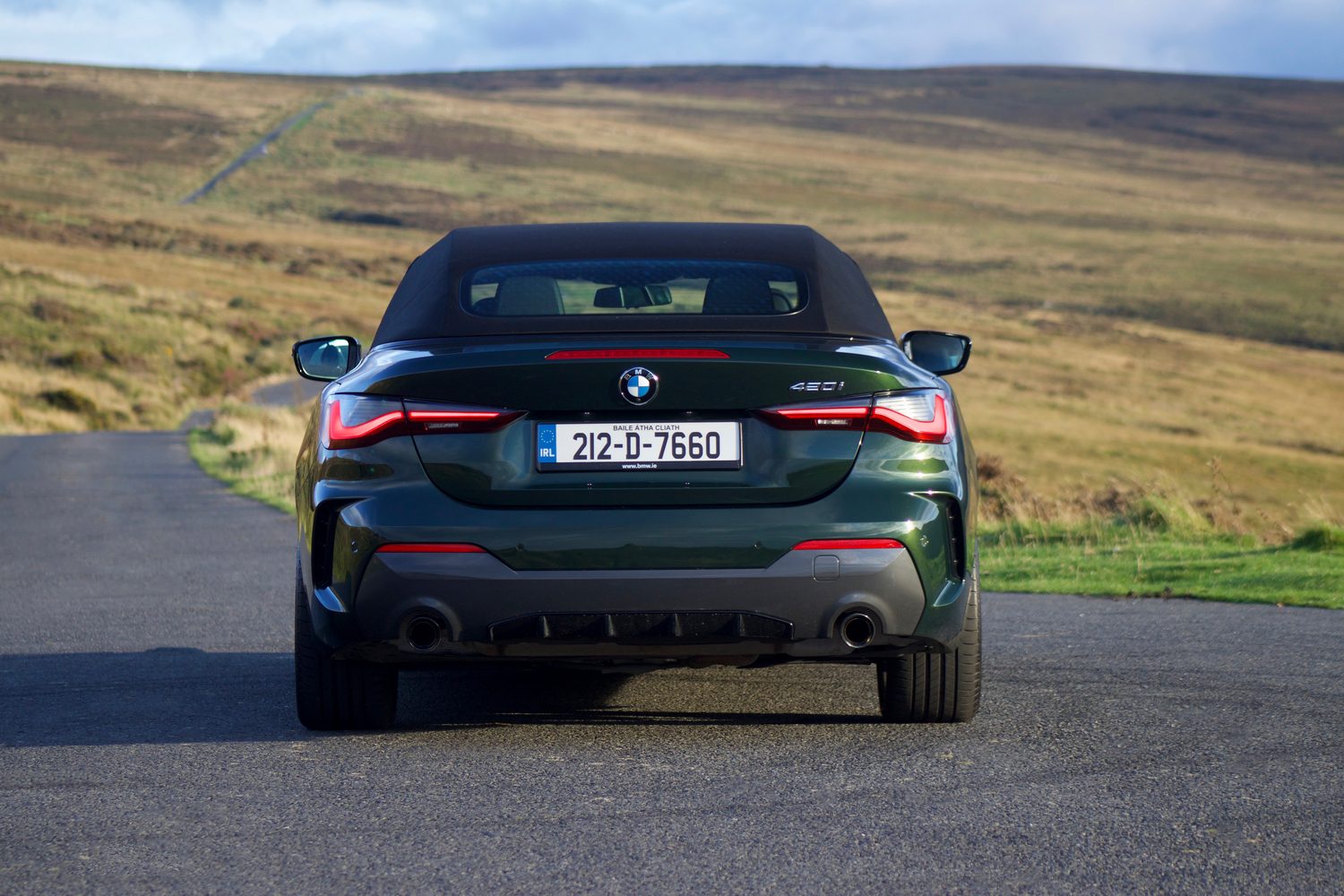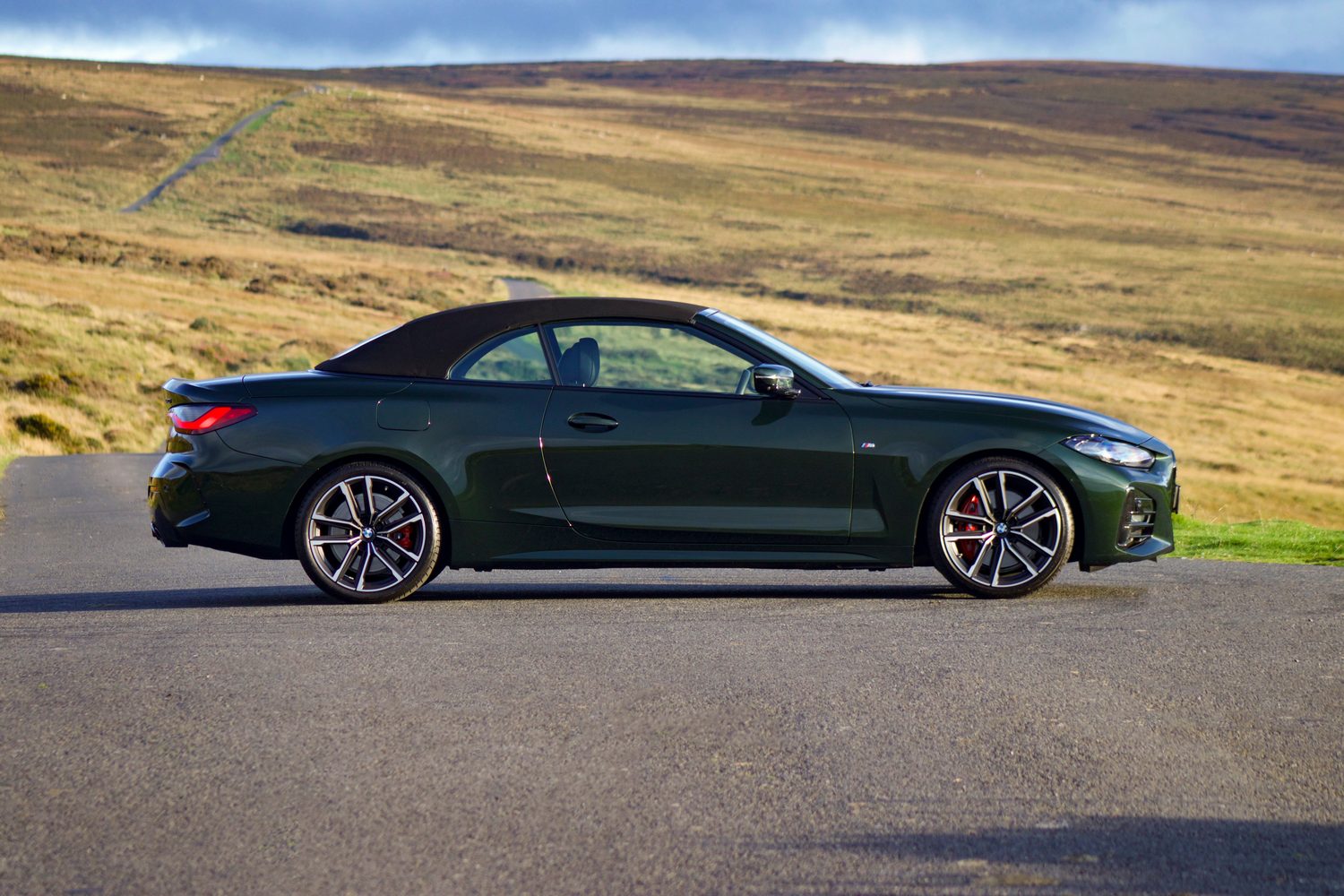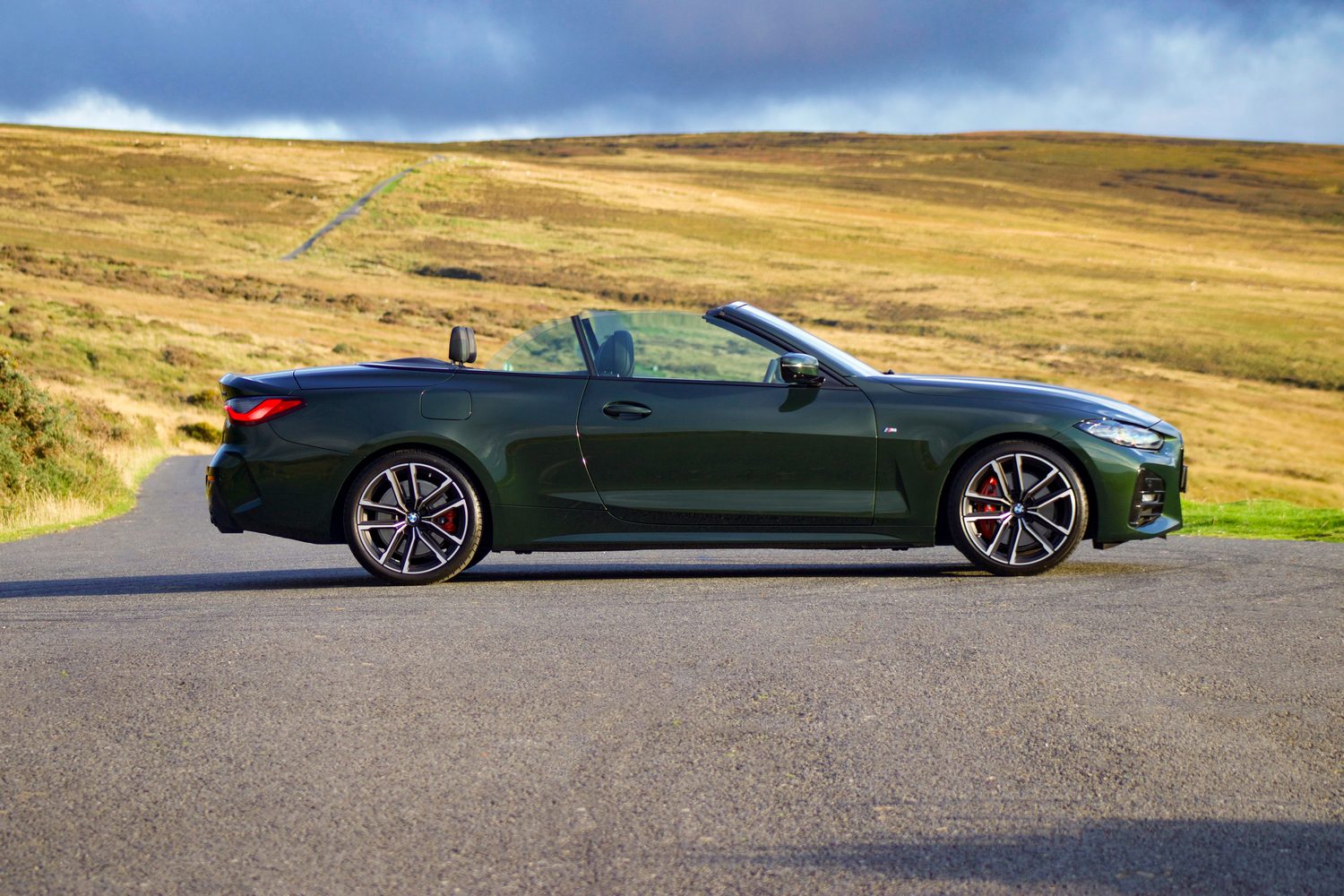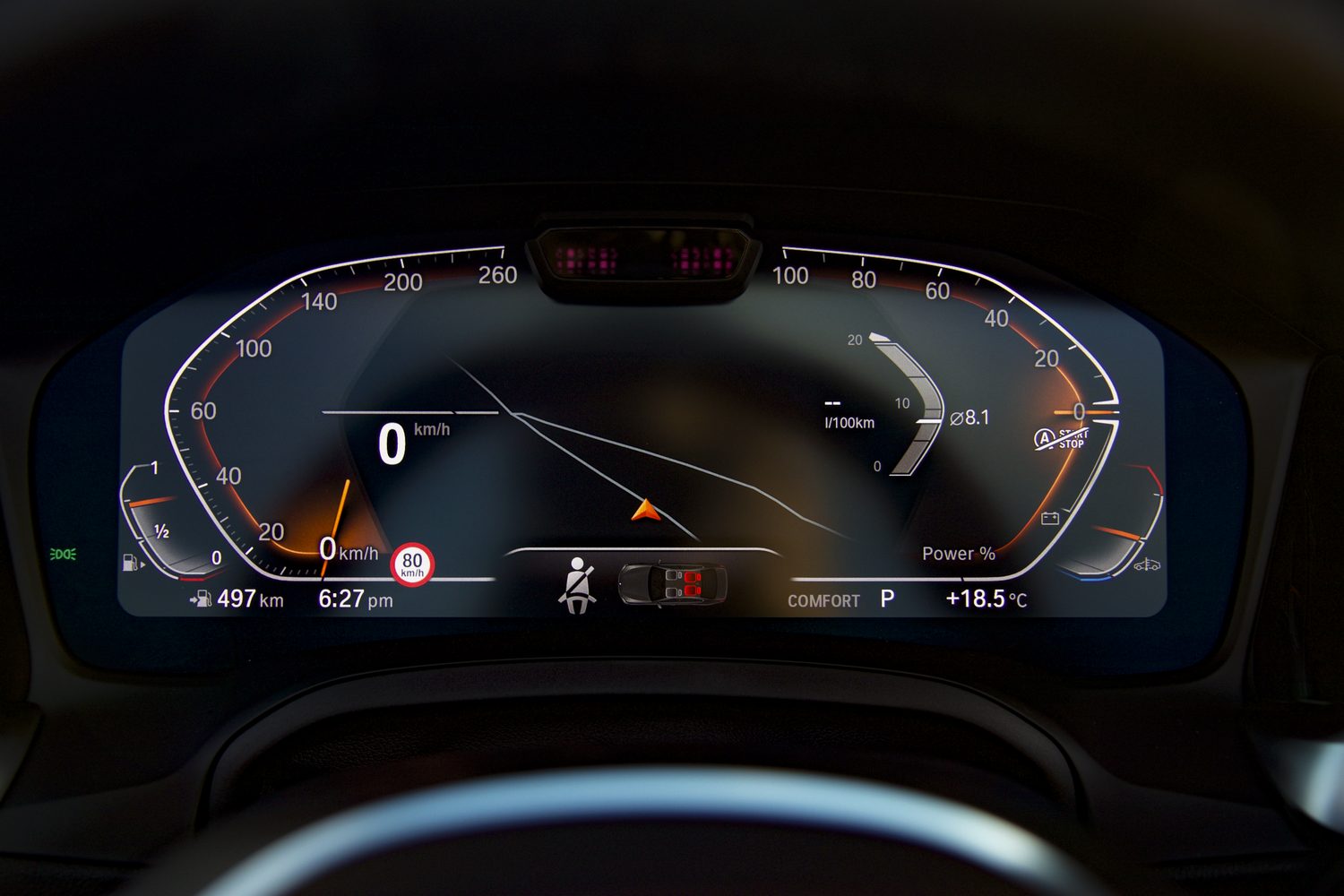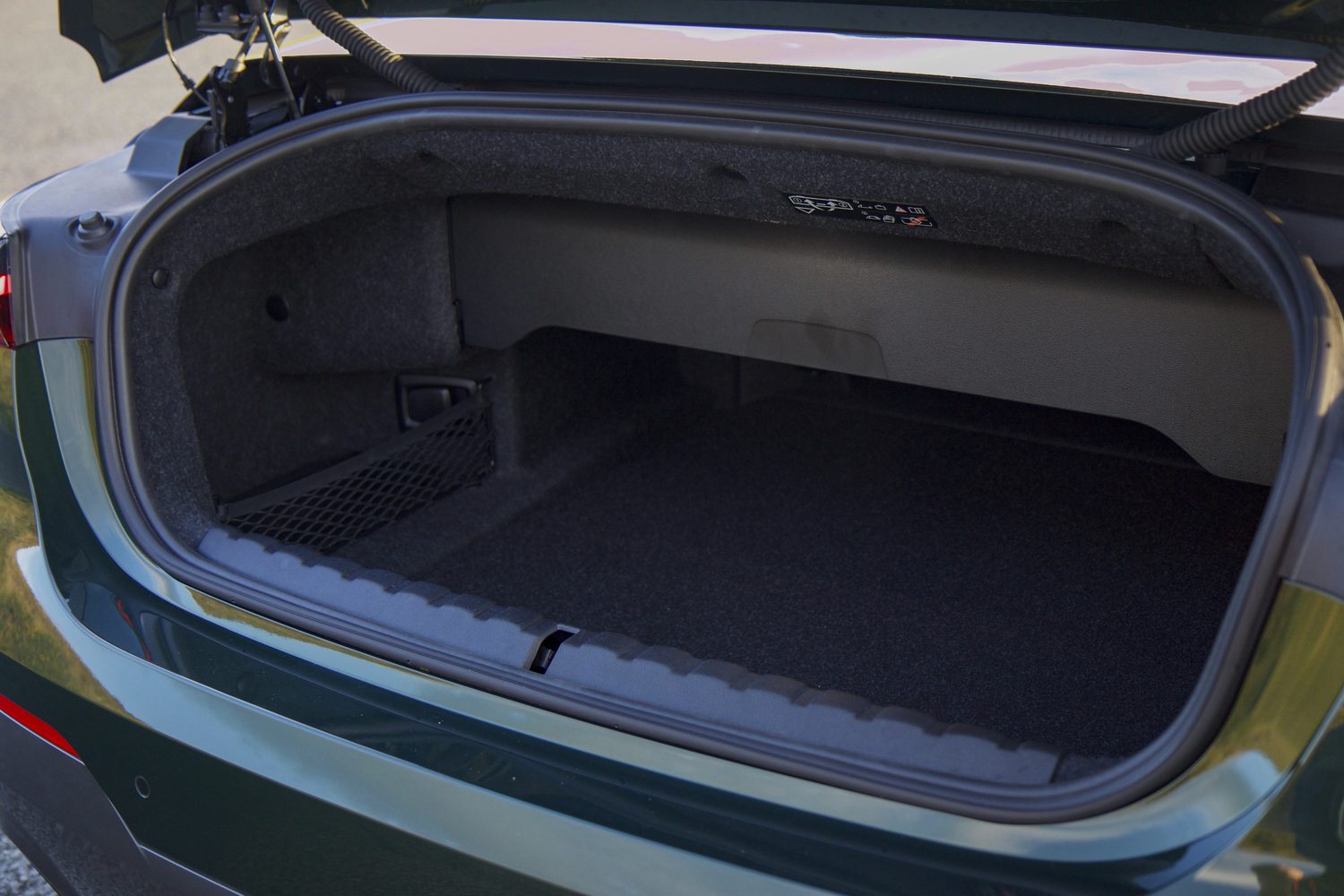BMW 4 Series overview
BMW's controversial styling language is slowly starting to find its way onto the more conservative models in its range. While the likes of the 3 Series and 5 Series have thus far escaped, the new, more upright grilles have now found their way onto the 4 Series Coupe and Convertible. While not quite the full-on 'Atomic Beaver Teeth' look as essayed by the new iX electric SUV, the look of the 4 Series is far less restrained than it used to be. Will that put buyers off? More importantly, does the new 4 Series drive as well as its predecessor, and can it still feel sharp with the roof removed?
A final word on the car's styling. Clearly, the new grilles are still causing some controversy, but while they're not going to appeal to everyone, we're slowly starting to warm to them. If you're being generous, there's a link back to the slimmer, taller grilles of early 1950s BMWs and, with the gorgeous 'Sanremo Green' paint work of our test car, we can forgive a lot. The Convertible also benefits from having less metal above the rear wheelarches - an area that looks unnaturally bulky on the 4 Series Coupe.
The BMW 4 Series model range
The 4 Series model range is deceptively simple - there are four petrol offerings (assuming you count the M4 Competition alongside its more workaday 4 Series brethren), three diesel versions and the choice of M Sport or M Sport Pro trim levels.
Simple enough, then? Not quite - this being a BMW there is a whole host of options and extra equipment packs that would take us a solid week to discuss here. Highlights it is, then...
The range starts with the petrol-powered four-cylinder turbocharged 420i model - €55,340 in M Sport Coupe form, or €65,140 as a Convertible. You can upgrade that to M Sport Pro for €63,960 in Coupe form, or €74,000 as a Convertible.
What's the difference between M Sport and M Sport Pro? Standard equipment on an M Sport 4 Series includes 18-inch alloy wheels, a small flick-up boot lid spoiler, 'High-Gloss Shadowline' (translation: black) exterior trim, anti-dazzle electric fold door mirrors with 'welcome lights' that project onto the ground, three-zone automatic air conditioning, an 'M' leather-wrapped steering wheel, ambient lighting, M Sport suspension, selectable driving modes, cruise control with automatic braking, LED headlights, parking sensors front and rear, a 12.3-inch digital instrument panel and a 10.25-inch central infotainment screen (which comes with connected live services including parking, weather and fuel pricing data) and 'Vernasca' leather upholstery.
M Sport Pro models add to all of that 19-inch alloys finished in black with run-flat tyres, dark-lensed headlights, higher-spec paint (including Tanzanite Blue and Dravit Grey), seatbelts with M tricolour stitching, sun protection glass, more interior trim options, 'sprint mode' (which is effectively a push-to-pass system that kicks in Sport mode for sharper acceleration when overtaking), adaptive M suspension, uprated M Sport brakes and an active sound generator that beefs up the in-cabin engine note.
There are some other specific options - the 2.0-litre diesel 420d models come with a standard 48-volt mild-hybrid system as standard, while the petrol 430i gets the M Sport brake upgrade as standard.
Optional packages include the Comfort Package (electric boot opening, keyless entry, heated steering wheel and more cabin storage areas); Comfort Plus Package (electric seat adjustment with memory function); Visibility Package (uprated Laser LED lights and high-beam assistance); M Carbon Exterior Package (lashings of carbon-fibre exterior trim); Technology Package (gesture control, enhanced Bluetooth connection with wireless charging, head-up display, Harman/Kardon stereo and wifi hotspot); Technology Plus Package (as the Technology Package but with dashcam, 3D surround-view parking camera and parking assistance and uprated electronic driver assistance); and the M Technology Package, which includes uprated cooling systems for the engine and brakes - that last one is available only on M440i.
So, above the 420i in the range, there's the diesel 420d (€55,860 as a Coupe, €63,990 as a Convertible); the 2.0-litre turbo 430i (€62,580 Coupe, €72,940 Convertible); the 430d xDrive four-wheel-drive diesel six-cylinder (€63,640 Coupe, €70,348 Convertible); the M440d xDrive diesel (€77,477 Coupe, €88,462 Convertible); and the M440i xDrive petrol (€84,493 Coupe, €93,770 Convertible.
Power outputs and CO2 emissions are 184hp and 146g/km for the 420i, to 190hp and 136g/km for the 420d, 245hp and 153g/km for the 430i, 286hp and 140g/km for the 430d xDrive, 340hp and 154g/km for the M440d xDrive and 375hp and 175g/km for the M440i. An automatic eight-speed gearbox is standard on all models, and xDrive four-wheel drive is optionally available for the 420i and 420d cars.
At the top of the range, of course, sits the €128,075, 510hp, 223g/km M4 Competition, which is not yet available as a Convertible, and which is really a whole separate model, effectively.
BMW Ireland currently has a finance offer for the 4 Series in place, with 5.9 per cent APR, and €532 monthly repayments over three years, with a €24,275 final payment. For all of BMW's up-to-date Irish offers, visit the BMW Ireland finance offers page.
The BMW 4 Series Convertible interior
There's a bit of a breach in the 4 Series line-up - the electric i4 (which is, effectively, a 4 Series Gran Coupe, albeit an entirely battery-powered model) gets an interior that gains some of the features of the big iX electric SUV, including that car's larger, curved infotainment screen and the latest version 8.0 generation of BMW's iDrive infotainment software.
This 4 Series Convertible, instead, has basically the same interior as the current 3 Series Saloon - a separate instrument binnacle and 10.25-inch central infotainment screen, and - thankfully - proper physical controls for the heating, ventilation and air conditioning.
If it lacks the latest tech of the i4, then the Convertible's cabin benefits from having a more coherent design (the i4's bigger screen looks a bit obviously bolted-on to these eyes) and the overall quality, fit and finish are essentially unimpeachable. Long gone are the days when BMW interiors lagged, in quality terms, behind their rivals from Audi and Mercedes - this is top-drawer stuff.
On the centre console, there's the familiar 'pistol' style automatic gear selector, which is surrounded by a bodyguard of buttons that control the driving modes, parking assistance, camera and parking brake. To the left of the lever, is the large click wheel that still runs the iDrive system, even though the display is also a touchscreen. While a touchscreen might be more modern, the click wheel is much safer and easier to use when driving, so it's good that BMW has kept it in service.
There are also shortcut buttons that give you quick access to major menu functions. Our car did come with the optional gesture control, which allows you to waggle your hand about in front of the screen to control the stereo volume and swipe between music tracks or radio stations, but it's a five-minute gimmick at best and not worth having to be honest. The controls on the steering wheel are much easier to use if you don't want to press the screen or use the physical stereo controls.
What is definitely worth having is the large full-colour head-up display that projects speed, navigation and other data onto the windscreen. It's not, perhaps, quite as impressive as that used by French luxury brand, DS, but it's good all the same. It also takes attention away from the 'outer-rim' style digital instruments, which some people seem to have taken against, but which I'm rather keen on.
As befits a sporting convertible, you sit low in the 420i, with the top of the frameless door almost reaching above your shoulder. Seat comfort is excellent, although the driving position is slightly offset to the left, which is annoying. The little 'seatbelt butler' that stretches the belt forwards as you sit down is helpful, as the longer doors push the belt mounting points further back than they would be in the 3 Series Saloon.
There's decent storage space in the front, with reasonably large door bins (which can optionally be divided into sections to prevent items from rolling and sliding around), more storage under the centre armrest and a big area under a sprung flap in the centre console. This houses the two cupholders (mounted sensibly ahead of the gear selector), the optional wireless phone charging pad and a USB-A socket for your phone, along with a 12-volt socket (there's another 12-volt socket in the boot, helpfully).
There's also a USB-C socket under the front armrest, and another two USB-C sockets (plus rear-seat ventilation and air conditioning controls) between the rear seats. Those rear seats are just about spacious enough - they're slightly more upright than those of the 4 Series Coupe, and the smaller side glass means it's a bit more claustrophobic back there when the roof is up, but in terms of head- and legroom, they're adequate for average-sized people for short journeys. There's no centre seatbelt so you're limited to just the two rear passengers, though there are ISOFIX points in both rear seats, and in the front passenger seat.
Boot space is a touch small - 385 litres is only what you get in a Golf hatchback - but the rear seat does split-fold 40:20:40, so you can expand that a bit and load through longer, slimmer items. There's a well into which the convertible roof folds away, which eats into that boot space to the tune of 85 litres when you're driving alfresco.
Speaking of which, this is the first time in two generations that BMW's mid-size convertible has had a soft roof, rather than a folding hard-top. It's some 40 per cent lighter than the old 4 Series hard-top, and it folds into a smaller space, to the benefit of both packaging and the car's styling. It folds back in just 18 seconds, and you can cycle the roof up or down at speeds of up to 50km/h.
To keep you toasty when the roof is off, there are heated front seats that also have built-in neck warmers, integrated into the headrests. With the roof down, but the side windows up, airflow is well-controlled and drafts are kept to a minimum. You can specify an optional wind deflector that fits over the back seats to cut down even further on air movement in the cabin. Even on a relatively cool October day, it's very comfortable right up to motorway speeds. When the roof is up, insulation is excellent, and we observed no leaks even in heavy downpours.
The BMW 420i Convertible driving experience
Clearly, much of the 420i Convertible's driving experience is going to be weather-dependent. That roof is good enough at keeping the outside out that you don't need to fear the worst ravages of the Irish weather (and, as the guys from Rolls-Royce always say, the sound of raindrops pattering on a fabric roof is kind of romantic...), but clearly, you're going to enjoy it more if the roof is down, your shades are on, and the sun is out.
That is the best way to enjoy the 420i, not least because, if you've got the top down, you're probably not going to be exploiting the engine's straight-line performance all that much. Which is just as well, as there isn't that much. In fact, this is the first time we've driven a '20i' BMW and found that the performance is a bit lacking.
Blame the 1,700-odd-kg kerb weight and the engine's relatively small 300Nm of torque. That 8.2-second 0-100km/h time doesn't look too clever on paper, and doesn't feel too sharp in the real world either. The much more powerful 430i could well be worth the upgrade, even with the significant price gap between the two.
This is still a good engine overall though - it's smooth, refined and economical if you don't stretch it too hard. At least, this being a BMW, you can also make the most of what performance there is. As with the 3 Series Saloon that shares the same mechanical package, the 420i has one of the best electrically assisted steering setups around, with excellent feel and feedback, solid weighting and impressive accuracy and responsiveness.
Even with the M Sport Pro pack fitted to our test car (which brings with it 19-inch wheels, run-flat tyres and adaptive suspension) the ride quality is good enough to keep the worst road surfaces from upsetting you, and while you'd never describe the 420i as being softly sprung, neither is it ever even approaching harsh nor uncomfortable.
In fact, on Irish roads, it's hard to think of another four-seat convertible with superior overall balance. It's a much, much sharper drive than the old 4 Series Convertible, which suffered from excessive weight thanks to its folding hard-top roof - not least because, when the roof was folded, all the weight was behind the driver, and mounted high up, which wasn't great in corners.
You will notice a slight difference when the roof is down, though. Chopping the top off a coupe inevitably affects structural rigidity. BMW says that this model's structural strength has been improved by four per cent compared to its predecessor, in part thanks to an aluminium shear panel at the bottom of the front end, and side skirts with extremely high torsional rigidity, but with the roof folded back you can still feel that the structure does not have the solidity of the coupe. There's nothing as uncouth as actual scuttle shake, just a faint - but noticeable - sense that the structure of the car is moving, and that the steering has lost a tiny degree of precision. It's the age-old compromise of the cabrio - if you want the sun on your head, you've got to give up something, somewhere.
Overall economy is very good - BMW quotes 6.7 litres per 100km for models with the standard 18-inch alloys and, on the bigger wheels (with some occasionally spirited driving...) we managed 7.3 litres over the course of a week.
Alternatives to the BMW 420i Convertible
Audi's handsome A5 Cabriolet might be getting a bit old now in design and engineering terms, but it's still a beautifully made thing, with tremendous quality. It's not as much fun to drive as the 420i, though.
The Mercedes-Benz C-Class Cabriolet is technically out of date now (there's no new-generation C-Class cabrio to go with the new C-Class saloon, as both it and the E-Class Coupe and Cabrio are going to be replaced by a single new CLE model), but the outgoing version is still good looking, has excellent quality and if it's slightly more comfort-oriented than the 420i, can still put in a decent performance when the road gets twisty.
If you're willing to sacrifice back seats, then you could consider an entry-level Porsche 718 Boxster, which is deeply fabulous to drive, but lacks an inspiring engine note. Or you could save yourself a bundle, and just go and buy a Mazda MX-5, which has neither the practicality nor the performance (nor the premium image), but which is far more real, true fun to drive than any other car mentioned here.
Our verdict on the BMW 420i Convertible
Convertibles don't work in Ireland? Don't believe it - the 420i Convertible has a seriously impressive mix of looks (yes, even with those grilles), driving engagement, practicality and all-season weather protection to make it a perfectly practical proposition all year round. All that's holding it back, really, is a slightly-too-chunky price tag and a lack of straight-line oomph from the 20i engine.
What do the rest of the team think?
For both refinement and looks, yes looks, this is the most attractive 3/4 Series ragtop in years. Leaving aside the gorgeous green paint work, the BMW provides a mostly comfortable and relaxed driving experience. The 420i powertrain does feel strained when you ask more of it, but in everyday driving it puts in an on-par performance for such a machine.
Dave Humphreys - Road Test Editor
The 4 Series Convertible looks stunning in this specification and, if all you're going to do is amble around, there's no reason to go for any other engine in the line-up. Personally, I couldn't live with the lacklustre performance of the 420i, especially as there's such a good chassis underneath waiting to be exploited, but there are plenty of other options in the range. Regardless, this is undoubtedly the most alluring 4 Series Convertible yet.
Shane O' Donoghue - Editor

